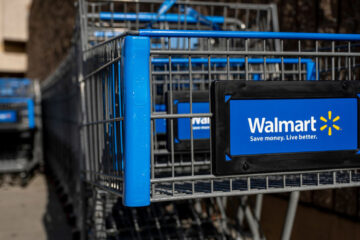If you have been to your local dealerships, scrolled the options on car-buying websites, or curiously poked around at the newest cars on the websites of any automaker these days, you are probably more than aware that new cars today are very expensive.
While many market options aren’t actually this high, the latest data from Kelley Blue Book and Cox Automotive says that the average new car in the U.S. cost buyers a whopping $48,039 in February 2025, a 1% increase from the same month in 2024, but a 1.3% decrease from the previous month.
But while it may seem that fortune is starting to favor new car buyers, a new report reveals that a new trend is limiting many buyers’ ability to keep and retain that new set of wheels.
New data released by Cox Automotive reveals that auto repossessions have surged to a level not seen since the Great Recession.
Getty Images
Beware the repo man
Auto repossessions, colloquially known as repos, are the procedures many Americans see tow truck drivers do on reality TV shows that air on channels deep into our cable TV packages.
Traditionally, they occur when owners default or fail to make payments on cars that are financed through a car loan or leased through a dealership.
Unfortunately, they are happening more than ever.
According to new data released by Cox Automotive, auto repossessions have surged to a level not seen since the Great Recession.
In 2024, 1.73 million vehicles were repossessed from their owners, the highest level since 2009. At the same time, the repossession rate jumped to 2.3%, the highest level in about five years.
These figures indicate that associated conditions, such as elevated interest rates and ever-high car prices, are keeping consumers down and making it difficult for them to keep up with their monthly bills.
More Automotive:
The most reliable new hybrids in 2025New car buyers are in for good news about inflated pricesBMW’s newest Mini Cooper is a cool car for buyers on a budget
The rate and number of repossessions fell in 2020 compared to 2019, as relief and stimulus payments made it easier for borrowers to make payments, and other measures provided some leniency for borrowers. Naturally, as those measures were lifted and inflation caused prices to shoot up, the American borrowing public took a hit.
Cox data shows that the average auto loan rate is 10.16% as of February 2025, the highest it has been in four months. At the same time, the typical monthly payment is $748, a 1.3% year-over-year dip from the same period in 2024.
Related: Experts are disturbed by a new trend affecting car owners
Americans are falling behind with car payments
The Cox data comes as more Americans fall behind on car payments to levels where repossession is imminent.
According to data from Fitch Ratings, Americans are missing car payments at a rate not seen in over 30 years, as 6.56% of subprime auto loan borrowers—”risky” borrowers with subpar credit scores—are behind on their payments by at least 60 days.
In addition, New York Federal Reserve data shows that 3% of auto loan borrowers were in “serious delinquency,” defined as payments 90 days or more past due.
Fitch Ratings North American asset-backed securities senior director Mike Girard told Bloomberg that high prices of new and used cars and high interest rates have made car loans a sticking point for some consumers, which has unfortunately driven a rise in auto repossessions.
“The lower income level has been really affected, and we expect that to continue to be the case this year,” Girard told Bloomberg. “There’s still the continued impact from higher inflation and interest rates.”
Related: Veteran fund manager issues dire S&P 500 warning for 2025


